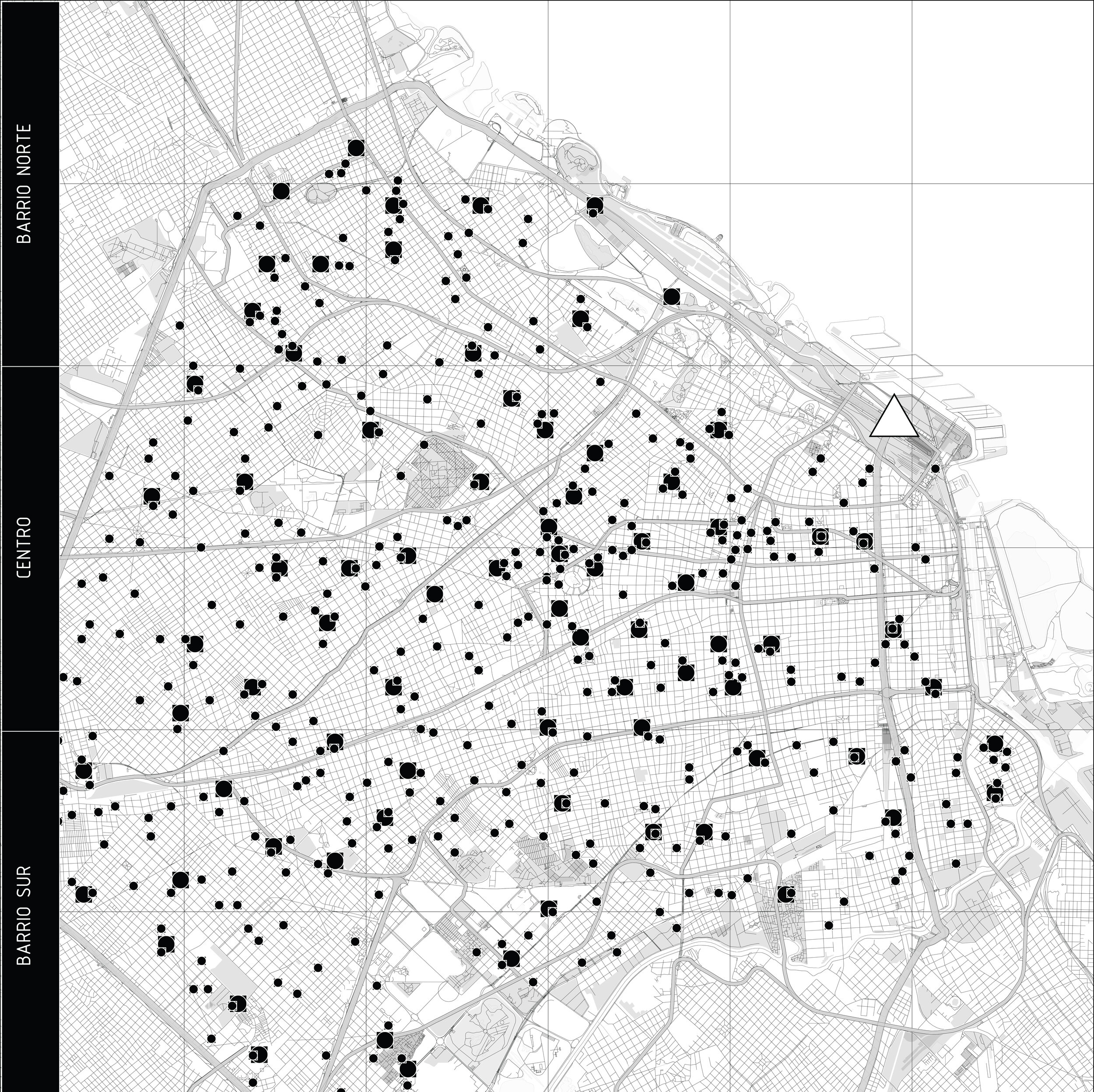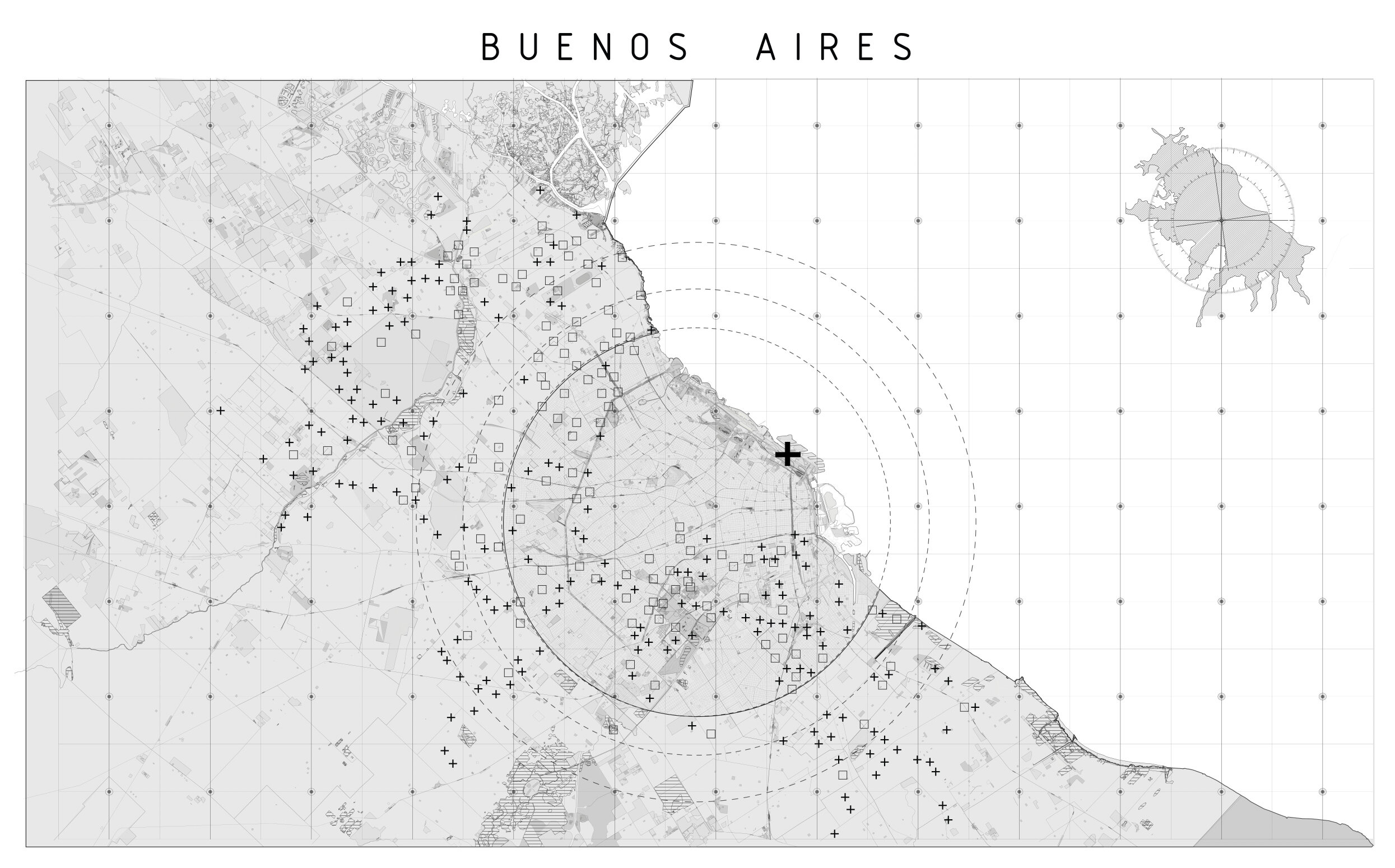Comuna 31 | Cornell Architecture Thesis Project
Rather than criticizing the surge of makeshift shelters that occurred in Latin America as a direct response to urban inequality, my proposal is to generate an architectural skeleton structure that allows for more deliberate growth.
The new sprawling structure creates a multi-level platform with an integrated plumbing and electrical network. This system allows for organized growth with integrated utilities for all community members.
The chosen site is Villa 31, one of the largest and densest urban slums in Latin America.

Areas of informal dwellings

Zones of public space

Public schools and daycares
Villa 31 (large +), one of Latin America’s largest, most densely populated urban slums as well as low income housing (■) and other informal settlements (+)
The new structural system I propose creates a planning platform that supports shelter-making while introducing electrical and plumbing availability as well as connection back to the city through using cable car network.

Proposed perimeter planning structure for Villa 31
Levels of organization
Gather
Currently, in the informal community, the ground floor is limited to solid brick houses and informal out-of-home vending systems. Rather than limiting movement with walls, this new column grid system allows for covered markets to occur while allowing porous pedestrian flow through the perimeter of the community.
Live
Given the exponential growth in this community, inhabitants have had to opt for unsafe, structurally stressed building systems to accommodate population growth. This system addresses the dangerous conditions by creating a structurally safe platform to allow for auto-constructed houses while creating a plug in grid system for inhabitants to connect to the formal plumbing and electric grid.
Play
Most importantly, the scarcity of public space is one that disproportionately affects the community in Villa 31. While implementing this stratified platform system, the intent of the final level is to create a circuitous public park promenade upon which the inhabitants can gather. Given the proximity of the community to both the bay of Buenos Aires as well as the city skyline, this added rooftop park allows for the inhabitants to enjoy the best of the city without having to travel far from their homes.
diagrammatic section through the perimeter intervention
Population in informal settlements in Latin America
Number of million inhabitants currently living in informal dwellings
Current social housing typologies in Latin America

Villa Lugano | Buenos Aires

Quinta Monroy | Chile

Heliopolis | Brazil



